Effects of 4-Hexylresorcinol on Protein Expressions in RAW 264.7 Cells as Determined by Immunoprecipitation High Performance Liquid Chromatography
- PMID: 30833641
- PMCID: PMC6399215
- DOI: 10.1038/s41598-019-38946-4
Effects of 4-Hexylresorcinol on Protein Expressions in RAW 264.7 Cells as Determined by Immunoprecipitation High Performance Liquid Chromatography
Abstract
4-Hexylresorcinol (4HR) is a small organic compound that is used as an additive antiseptic and antioxidant, but its molecular properties have not been clearly elucidated. The present study explored the cellular effects of 4HR on RAW 264.7 cells by immunoprecipitation high-performance liquid chromatography (IP-HPLC) using 216 antisera. 4HR-treated cells showed significant decreases in the expressions of proliferation-related proteins, cMyc/MAX/MAD network, p53/Rb/E2F and Wnt/β-catenin signalings, epigenetic modifications, and protein translation. Furthermore, 4HR suppressed the expressions of growth factors and proteins associated with RAS signaling, NFkB signaling, inflammation, and osteogenesis, but elevated the expressions of proteins associated with p53-mediated and FAS-mediated apoptosis, T-cell immunity, angiogenesis, antioxidant, and oncogenic signaling. In a 4HR adherence assay, TNFα, PKC, osteopontin, and GADD45 were strongly adherent to 4HR-coated beads, whereas IL-6, c-caspase 3, CDK4, and c-caspase 9 were not. Many 4HR adherent proteins were expressed at lower levels in 4HR treated RAW 264.7 cells than in non-treated controls, whereas 4HR non-adherent proteins were expressed at higher levels. These observations suggest 4HR affects the expressions of proteins in an adhesion-dependent manner and that its effects on proteins are characteristic and global in RAW 264.7 cells.
Conflict of interest statement
The authors declare no competing interests.
Figures
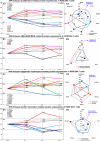
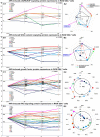
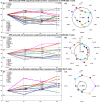
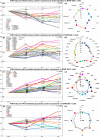
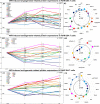



Similar articles
-
4-Hexylresorcinol: pharmacologic chaperone and its application for wound healing.Maxillofac Plast Reconstr Surg. 2022 Feb 1;44(1):5. doi: 10.1186/s40902-022-00334-w. Maxillofac Plast Reconstr Surg. 2022. PMID: 35103875 Free PMC article. Review.
-
Extensive protein expression changes induced by pamidronate in RAW 264.7 cells as determined by IP-HPLC.PeerJ. 2020 May 21;8:e9202. doi: 10.7717/peerj.9202. eCollection 2020. PeerJ. 2020. PMID: 32509464 Free PMC article.
-
4-hexylresorcinol-induced protein expression changes in human umbilical cord vein endothelial cells as determined by immunoprecipitation high-performance liquid chromatography.PLoS One. 2020 Dec 15;15(12):e0243975. doi: 10.1371/journal.pone.0243975. eCollection 2020. PLoS One. 2020. PMID: 33320912 Free PMC article.
-
Pentoxifylline-induced protein expression change in RAW 264.7 cells as determined by immunoprecipitation-based high performance liquid chromatography.PLoS One. 2022 Mar 25;17(3):e0261797. doi: 10.1371/journal.pone.0261797. eCollection 2022. PLoS One. 2022. PMID: 35333871 Free PMC article.
-
Two different protein expression profiles of oral squamous cell carcinoma analyzed by immunoprecipitation high-performance liquid chromatography.World J Surg Oncol. 2017 Aug 8;15(1):151. doi: 10.1186/s12957-017-1213-5. World J Surg Oncol. 2017. PMID: 28789700 Free PMC article. Review.
Cited by
-
4-Hexylresorcinol: pharmacologic chaperone and its application for wound healing.Maxillofac Plast Reconstr Surg. 2022 Feb 1;44(1):5. doi: 10.1186/s40902-022-00334-w. Maxillofac Plast Reconstr Surg. 2022. PMID: 35103875 Free PMC article. Review.
-
Immunomodulation for maxillofacial reconstructive surgery.Maxillofac Plast Reconstr Surg. 2020 Mar 5;42(1):5. doi: 10.1186/s40902-020-00249-4. eCollection 2020 Dec. Maxillofac Plast Reconstr Surg. 2020. PMID: 32206664 Free PMC article. Review.
-
Extensive protein expression changes induced by pamidronate in RAW 264.7 cells as determined by IP-HPLC.PeerJ. 2020 May 21;8:e9202. doi: 10.7717/peerj.9202. eCollection 2020. PeerJ. 2020. PMID: 32509464 Free PMC article.
-
Sericin's Potential in Osteoporosis Management: The Roles of L-Serine and D-Serine in Bone Metabolism Regulation.Nutrients. 2025 Feb 4;17(3):574. doi: 10.3390/nu17030574. Nutrients. 2025. PMID: 39940432 Free PMC article.
-
4-hexylresorcinol-induced protein expression changes in human umbilical cord vein endothelial cells as determined by immunoprecipitation high-performance liquid chromatography.PLoS One. 2020 Dec 15;15(12):e0243975. doi: 10.1371/journal.pone.0243975. eCollection 2020. PLoS One. 2020. PMID: 33320912 Free PMC article.
References
-
- McConnell, Virginia F. Hlasiwetz and Barth - Pioneers in the structural aspects of plant products. Journal of chemical education. 1953;30:380. doi: 10.1021/ed030p380. - DOI
-
- Gisvold, O. Textbook of Organic Medicinal and Pharmaceutical Chemistry. 5th edn, 237–262 (Lippincott, 1966).
-
- Brkic D. Intestinal parasites: helminths; with special reference to newer antihelminthics. Srpski arhiv za celokupno lekarstvo. 1956;84:1401–1416. - PubMed
Publication types
MeSH terms
Substances
LinkOut - more resources
Full Text Sources
Other Literature Sources
Research Materials
Miscellaneous

